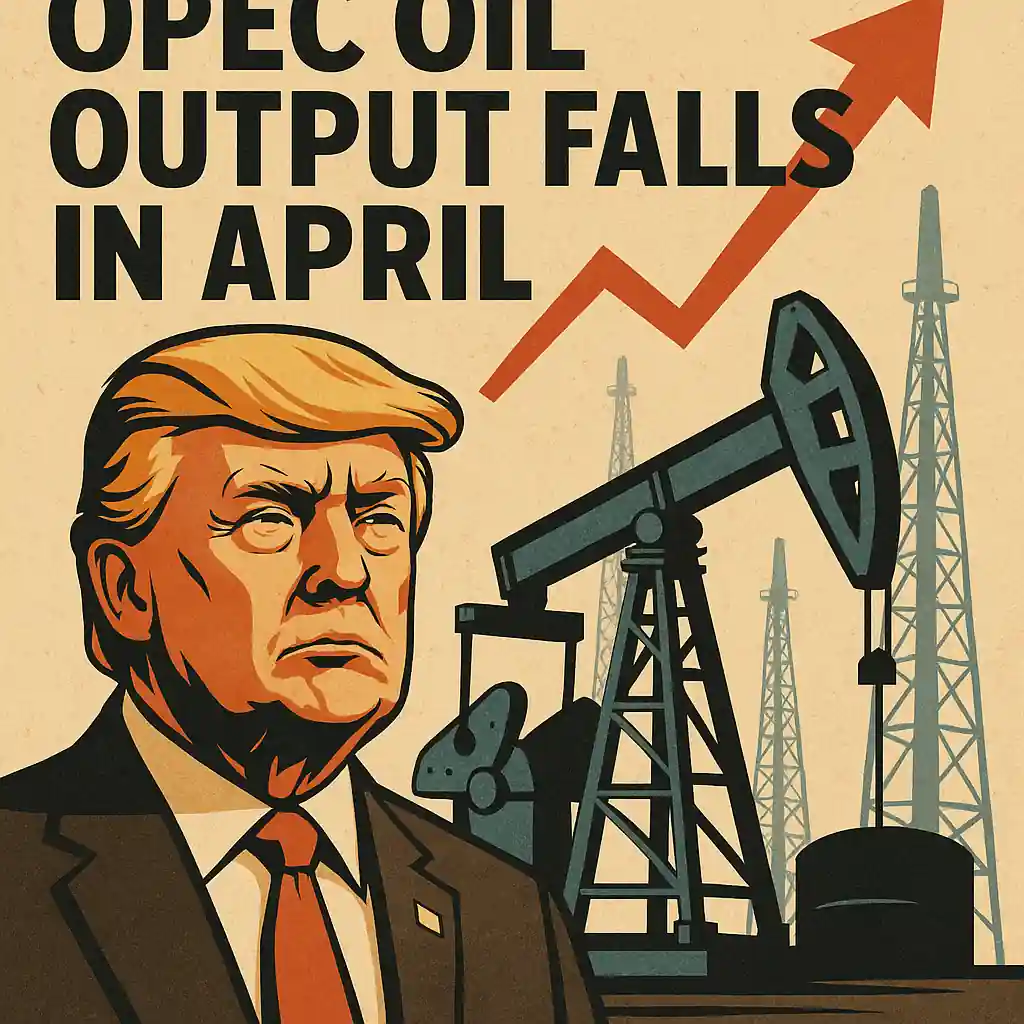OPEC Oil Output Falls in April Despite Planned Hikes
OPEC oil production declined slightly in April, dropping by 30,000 barrels per day to 26.60 million bpd, according to a Reuters survey. This was unexpected, as the group began easing output cuts that month. The decline reflects disruptions in key oil-producing nations.
Venezuela saw the steepest drop in production. U.S. sanctions have disrupted exports and forced cargo cancellations. Iraq and Libya also reported minor reductions, despite OPEC+ targets suggesting output should rise.
Venezuelan Sanctions Undermine Oil Supply Recovery
Venezuela’s exports declined sharply due to renewed U.S. enforcement actions. Chevron canceled scheduled shipments, forcing several vessels to turn back. As a result, Venezuelan oil deliveries to the global market fell.
This pressure is part of President Donald Trump’s broader push to reduce oil flows from sanctioned nations. The strategy appears to be having real effects on Venezuelan output, limiting OPEC’s ability to increase total supply.
Iraq Cuts Production Under OPEC+ Pressure
Iraq trimmed its production in April, reflecting pressure to meet OPEC+ quota agreements. While the country has historically overproduced, recent data shows Iraq moving closer to compliance. The cut helped balance the rise in Iranian oil output.
The UAE and Kuwait held steady, with production remaining near their official limits. Saudi Arabia, the group’s largest producer, showed little change from March.
Iran Defies Sanctions, Lifts Oil Exports
While some OPEC members struggled, Iran increased its exports and delivered the largest output gain in April. Despite ongoing U.S. sanctions, Iranian oil appears to be flowing more freely. The new American restrictions haven’t yet impacted Iran’s export levels.
This divergence is critical. While Venezuela’s flows are shrinking, Iran is expanding. That shift could complicate OPEC+ efforts to manage supply and stabilize global oil prices.
Market Outlook for Oil Remains Uncertain
OPEC+ intends to ramp up production more aggressively in May and June. Leaders believe market fundamentals—like low inventories—support higher output. But actual gains may depend on geopolitical developments and U.S. foreign policy.
The U.S. crackdown on sanctioned producers adds uncertainty to future oil flows. If Venezuela and Iran remain under pressure, OPEC may struggle to meet its targets, even with higher quotas.
Conflicting Data Highlights Oil Market Complexity
The Reuters survey draws from a variety of sources, including data from LSEG, Kpler, and oil industry insiders. It offers one of the most consistent views of oil supply. However, discrepancies remain.
While OPEC’s own data suggests UAE and Iraq are meeting targets, other agencies—like the International Energy Agency—believe they’re producing more. These variations complicate market analysis and may influence decisions in future OPEC+ meetings.




